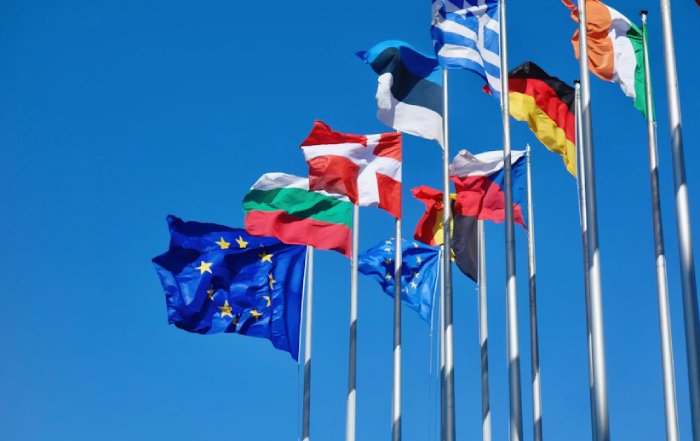In 2025, the global business environment has evolved into a complex ecosystem shaped by accelerating technological innovation, shifting geopolitical dynamics, and a renewed emphasis on corporate accountability. Within this environment, organizations across the United States, Europe, Asia, and emerging markets have begun to recognize that traditional leadership models—once characterized by homogeneity and centralized decision-making—are no longer sufficient to meet the demands of modern expansion. Businesses are increasingly turning their attention to leadership diversity not as a symbolic gesture but as a strategic driver of performance, competitiveness, and long-term sustainability. As detailed at DailyBusinesss.com, where the intersection of leadership, strategy, and innovation is continuously explored, the push toward diversified executive structures reflects a deeper understanding that varied perspectives generate more resilient and adaptable organizations.
Leadership diversity, in its most comprehensive form, extends far beyond demographic representation. It encompasses diversity of cultural background, professional experience, technical expertise, cognitive approach, and generational perspective. Organizations such as McKinsey & Company, World Economic Forum, and Harvard Business School have published extensive research illustrating the correlation between executive diversity and elevated financial performance, more effective governance, and improved risk management. Readers seeking additional context on global economic impacts may consider resources such as the International Monetary Fund at https://www.imf.org or insights from the Organisation for Economic Co-operation and Development at https://www.oecd.org. These sources reinforce the growing consensus that diversity at the leadership level is not merely an ethical priority but a foundational component of strategic expansion.
The urgency of this shift is particularly pronounced in markets such as the United States, Germany, Singapore, the United Kingdom, and Australia, where competition for innovation leadership continues to intensify. Companies in these regions operate in highly dynamic economic environments, where regulatory changes, digital transformation mandates, and evolving consumer expectations demand rapid adaptation. By cultivating leadership teams composed of individuals with varied experiences, companies gain access to a wider range of strategic solutions, allowing them to navigate international complexities with greater agility. Readers of DailyBusinesss.com, especially those following the platform’s categories on global economics at https://www.dailybusinesss.com/economics.html, founders at https://www.dailybusinesss.com/founders.html, and business insights at https://www.dailybusinesss.com/business.html, increasingly recognize that leadership diversification is a practical necessity for global expansion.
Beyond competitiveness, leadership diversity plays a central role in building trust across culturally diverse markets. In regions such as Southeast Asia, Africa, Europe, and South America, local business environments require nuanced understanding of cultural, political, and economic norms. Leaders with multicultural backgrounds or global experience are better positioned to establish meaningful cross-border relationships, build alignment with local partners, and navigate unfamiliar regulatory landscapes. This capability becomes crucial in sectors such as technology, international trade, finance, and sustainable development, where cross-border collaboration is essential. Readers may explore complementary insights on global trade dynamics from the World Trade Organization at https://www.wto.org or market analysis through https://www.bloomberg.com.
While many organizations acknowledge the importance of diverse leadership, the path to implementing such structures requires strategic foresight, committed investment, and an appreciation of regional differences. The most successful companies embed diversity directly into their organizational culture, succession planning models, executive development frameworks, and international growth strategies. This intentional approach aligns with what readers find in DailyBusinesss.com reporting through areas such as technology coverage at https://www.dailybusinesss.com/tech.html, market analysis at https://www.dailybusinesss.com/markets.html, and finance at https://www.dailybusinesss.com/finance.html. Modern organizations must operate at the intersection of analytical decision-making and human-centered leadership, and diverse leadership is central to that balance.
The Strategic Value of Leadership Diversity in an Interconnected Global Market
As globalization continues to redefine the competitive landscape, leadership diversity has emerged as one of the most influential determinants of organizational adaptability and sustainable growth. In 2025, the relationship between diverse leadership teams and successful market expansion is grounded in robust research published by institutions such as Deloitte, PwC, and Harvard Business Review, all demonstrating that leadership diversity correlates with higher financial returns, stronger operational foresight, and more resilient governance structures. Companies that prioritize inclusive leadership consistently report improved market foresight, enhanced innovation, and elevated stakeholder trust—factors that matter deeply in industries shaped by rapid technological advancement.
Organizations expanding beyond domestic markets into regions such as Southeast Asia, Sub-Saharan Africa, Europe, or Latin America must interpret regulatory environments, consumer behavior, and geopolitical complexity with precision. Markets like Singapore, Japan, and South Korea require leaders who understand technological ecosystems and innovation-driven cultures. Regions such as Brazil, South Africa, or Thailand demand insight into diverse social norms, political realities, and evolving economic structures. Leaders with varied international backgrounds inherently possess advantages in these scenarios. Readers seeking deeper context may consult the World Bank at https://www.worldbank.org or economic perspectives from The Economist at https://www.economist.com.
On DailyBusinesss.com, the platform’s world business coverage at https://www.dailybusinesss.com/world.html and trade insights at https://www.dailybusinesss.com/trade.html consistently highlight how leadership diversity supports strategic response to dynamic global developments. Whether confronting EU regulatory adjustments, navigating AI standards in the United States, or adapting to economic shifts across Asia and Europe, diverse leadership teams offer the varied perspectives necessary to interpret global frameworks with clarity. This versatility enables companies to maintain operational stability even as geopolitical and economic environments evolve rapidly.
Innovation cycles also benefit significantly from leadership diversity. In technology-driven sectors—including artificial intelligence, blockchain, biotechnology, sustainability, and digital supply chains—the pace of innovation depends on the ability to synthesize multiple perspectives into cohesive strategies. Companies such as Microsoft, Google, Tesla, Samsung, and Tencent demonstrate how innovation thrives when leadership challenges established assumptions through interdisciplinary dialogue. Platforms like MIT Technology Review at https://www.technologyreview.com offer valuable perspectives on innovation trends reinforcing these realities.
Leadership diversity additionally strengthens financial performance by aligning companies with evolving investor expectations. Research from BlackRock, Goldman Sachs, and JP Morgan shows that institutional investors now evaluate leadership diversity as a measure of operational health and future performance. Readers interested in these investment dynamics may reference sources such as the New York Stock Exchange at https://www.nyse.com or Financial Times at https://www.ft.com, and further explore related analysis on DailyBusinesss.com through https://www.dailybusinesss.com/investment.html.
Leadership Diversity: Your Global Expansion Roadmap
Interactive guide to building diverse leadership for 2025 and beyond
Strategic Value of Leadership Diversity
🌐 Global Market Adaptability
Diverse leadership teams navigate regulatory environments, consumer behaviors, and geopolitical complexity with greater precision across regions like Southeast Asia, Europe, and Latin America.
💡 Innovation Acceleration
Technology-driven sectors including AI, blockchain, and biotechnology thrive when leadership challenges assumptions through interdisciplinary dialogue and varied perspectives.
🤝 Stakeholder Trust
Institutional investors now evaluate leadership diversity as a core measure of operational health, governance quality, and future performance potential.
Core Benefits for Global Expansion
Enhanced Innovation & Problem-Solving
Organizations like Microsoft, Google, and Tesla demonstrate how diverse leadership synthesizes multiple perspectives into cohesive strategies, driving breakthrough innovation in AI, sustainability, and digital transformation.
Cultural Intelligence & Market Understanding
Leaders with firsthand experience in markets like China, India, Japan, and Brazil offer insights that shape more effective product design, marketing strategies, and customer engagement models.
Risk Management & Resilience
Diverse teams identify vulnerabilities that homogeneous groups overlook, supporting stronger scenario planning and crisis preparation across economic, political, and technological risks.
Cross-Border Communication Excellence
Multicultural leadership accelerates regional integration, establishes stronger partnerships, and navigates regional sensitivities with effectiveness essential for global operations.
Talent Attraction & Retention
Inclusive leadership correlates with higher employee engagement and retention, creating workplaces that attract top global talent across North America, Europe, and Asia.
Sustainability Leadership
Leaders with backgrounds in environmental science, global policy, and sustainable finance help organizations design responsible strategies aligned with ESG expectations and climate imperatives.
Regional Strategic Considerations
🇸🇬 Singapore, Japan & South Korea
Require leaders who understand technological ecosystems, innovation-driven cultures, and rapidly evolving AI and data governance standards.
🇧🇷 Brazil, South Africa & Thailand
Demand insight into diverse social norms, political realities, evolving economic structures, and emerging market dynamics.
🇺🇸 United States & Canada
Leadership must balance technological innovation with regulatory compliance, digital transformation mandates, and evolving consumer expectations.
🇪🇺 Germany, UK & EU Markets
Navigate complex regulatory frameworks, sustainability requirements, and cross-border governance while maintaining competitive innovation.
🌍 Southeast Asia & Africa
High-growth regions requiring cultural fluency, local insight, and understanding of diverse regulatory environments and consumer behaviors.
🌎 Latin America
Leaders need expertise in navigating political complexity, economic volatility, and building trust across culturally diverse markets.
Implementation Roadmap
Embed Diversity into Corporate Strategy
Integrate diversity directly into organizational culture, succession planning models, and executive development frameworks from the outset.
Build Global Talent Pipelines
Invest in global leadership development programs that expose emerging leaders to international markets, following examples from GE, Unilever, and Schneider Electric.
Strengthen Board Governance
Ensure boards include diverse professional, geographic, and demographic representation for more balanced decisions and stronger strategic oversight.
Develop Cultural Intelligence
Build multilingual capabilities and multicultural awareness across leadership teams to enhance workforce alignment and global operations.
Integrate ESG & Sustainability Goals
Align leadership diversity with climate-related risk management, responsible sourcing, and comprehensive ESG reporting frameworks.
Measure & Optimize Continuously
Track diversity metrics, financial performance correlations, and stakeholder feedback to refine strategies and demonstrate value.
How Leadership Diversity Strengthens Innovation, Adaptation, and Market Understanding
Leadership diversity acts as a strategic catalyst for innovation, agility, and global market insight. Businesses operating in AI, fintech, digital commerce, green technology, and advanced manufacturing require leadership capable of integrating emerging technologies with global market realities. Organizations such as IBM, NVIDIA, and Accenture exemplify how innovation grows when leadership teams bring together diverse academic, cultural, and professional experiences. This environment allows companies to challenge norms, iterate solutions, and maintain relevance in rapidly evolving industries.
Cultural intelligence is another core benefit of leadership diversity. Markets like China, India, Japan, Brazil, and the United States possess fundamentally different consumer behaviors and regulatory conditions. Leaders with firsthand experience in these regions offer insights that shape more effective product design, marketing strategies, and customer engagement models. For those seeking additional global consumer insights, the Pew Research Center at https://www.pewresearch.org provides extensive research.
Adaptability becomes essential when confronting regulatory change, supply chain disruption, or geopolitical tension. Organizations with leadership teams representing wide-ranging expertise—public policy, sustainability, data science, economics, law, cybersecurity—are equipped to assess risks through multidimensional lenses. For additional analysis on global volatility, readers may consult Reuters at https://www.reuters.com.
Leadership diversity is equally vital in enhancing cross-border communication, a foundational requirement for successful global expansion. Companies with leaders experienced in multicultural negotiations establish stronger partnerships, navigate regional sensitivities, and align international teams with strategic goals. DailyBusinesss.com readers exploring business leadership at https://www.dailybusinesss.com/business.html often encounter case studies demonstrating how multicultural leadership accelerates regional integration.
Sustainability leadership also benefits from diverse expertise, particularly as companies face environmental regulation, ESG expectations, and climate risk. Leaders with backgrounds in environmental science, global policy, and sustainable finance help organizations design responsible strategies aligned with global expectations. Additional insights may be found through the UN Global Compact at https://www.unglobalcompact.org and the sustainability coverage at https://www.dailybusinesss.com/sustainable.html.
Leadership Diversity as a Foundation for Global Resilience and Long-Term Expansion
Leadership diversity strengthens resilience by enhancing risk interpretation, cross-border alignment, and organizational integrity. Companies operating across multiple regions must evaluate economic, political, and technological risks from a global perspective. Leaders with diverse backgrounds identify vulnerabilities that homogeneous teams may overlook, supporting stronger scenario planning and crisis preparation. Organizations such as HSBC, Siemens Energy, and SAP demonstrate these advantages in practice. For deeper insights into risk management standards, readers may refer to the International Organization for Standardization at https://www.iso.org.
Investors worldwide increasingly view leadership diversity as an indicator of governance quality, credibility, and long-term value. Global financial hubs—New York, London, Hong Kong, Zurich, Frankfurt—incorporate diversity metrics into investment decision-making and ESG scoring. DailyBusinesss.com investment coverage at https://www.dailybusinesss.com/investment.html and market reporting at https://www.dailybusinesss.com/markets.html highlight how leadership diversity influences capital flows and shareholder confidence.
Leadership diversity also enhances internal organizational culture by creating workplaces that attract global talent. Research from LinkedIn, Glassdoor, and Boston Consulting Group shows that inclusive leadership correlates with higher employee engagement and retention. Readers may explore employment-focused insights on DailyBusinesss.com at https://www.dailybusinesss.com/employment.html or consult the International Labour Organization at https://www.ilo.org.
Embedding Leadership Diversity Into Corporate Strategy for Sustained Global Expansion
Leadership diversity becomes transformative when woven into long-term corporate strategy. Companies achieve this through inclusive recruitment, global talent pipelines, succession planning, and diverse board governance. Organizations such as GE, Unilever, and Schneider Electric invest in global leadership development programs that expose emerging leaders to international markets. For further insights into leadership development frameworks, readers may explore the Center for Creative Leadership at https://www.ccl.org.
Board governance also plays a central role. Boards with diverse professional, geographic, and demographic representation make more balanced decisions and strengthen long-term strategic oversight. Guidance on board governance may be found at the European Corporate Governance Institute at https://www.ecgi.global.
Sustainability strategies, too, benefit from diverse leadership, particularly as companies integrate climate-related risk management, responsible sourcing, and ESG reporting. Readers can explore sustainability topics at https://www.dailybusinesss.com/sustainable.html.
Cross-cultural communication, increasingly essential in global operations, becomes more effective under diverse leadership teams with multilingual capabilities and multicultural awareness. Research from Hofstede Insights at https://www.hofstede-insights.com demonstrates the importance of cultural intelligence in workforce alignment and global operations.
The Future of Global Expansion: Why Leadership Diversity Defines Competitive Advantage in 2025 and Beyond
As the global economy evolves, leadership diversity has become an essential determinant of long-term business success. The convergence of digital transformation, geopolitical shifts, climate imperatives, and changing workforce expectations requires leadership that reflects global complexity. Companies that embrace leadership diversity will be more capable of interpreting cross-border developments, innovating responsibly, and expanding sustainably across continents.
High-growth regions across Southeast Asia, Africa, and Latin America demand leadership with cultural fluency and local insight. Regulatory advances in AI, data governance, and sustainability across the United States, Germany, the United Kingdom, Singapore, and South Korea require leadership that balances global compliance with technological innovation. Authoritative sources such as the Carnegie Endowment at https://carnegieendowment.org reinforce how geopolitical complexity will shape global corporate strategy.
The competition for global talent further elevates leadership diversity as a strategic priority. Multinational companies across North America, Europe, and Asia increasingly seek executives who understand multicultural workforces and emergent demographic trends. Research from the McKinsey Global Institute at https://www.mckinsey.com/mgi underscores how talent dynamics influence global innovation.
Entrepreneurs and founders from diverse backgrounds are driving innovation in fintech, biotech, sustainability, digital commerce, and AI—reshaping the global startup ecosystem. Readers exploring founder insights at https://www.dailybusinesss.com/founders.html recognize how leadership diversity fosters groundbreaking solutions and global expansion.
Ultimately, leadership diversity has transitioned from a moral imperative into a strategic necessity. Companies whose executive teams reflect global perspectives will be better prepared to navigate uncertainty, drive sustained innovation, and build competitive advantage across international markets. They will shape the standards of global governance, ethical leadership, and sustainable economic progress across regions as diverse as North America, Europe, Asia, Africa, and South America.
For the global readership of DailyBusinesss.com, the message is unequivocal: leadership diversity is the strategic engine powering global business expansion in 2025 and the defining characteristic of companies poised to lead the emerging global economy.










